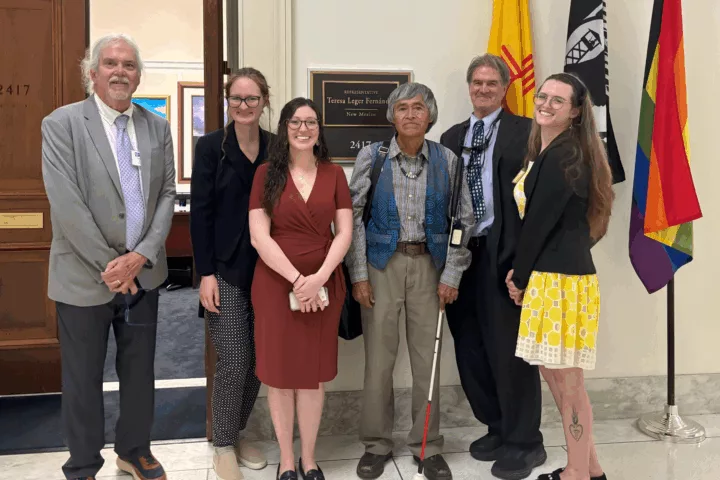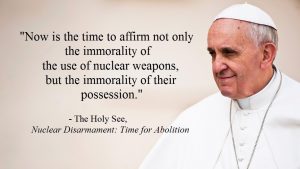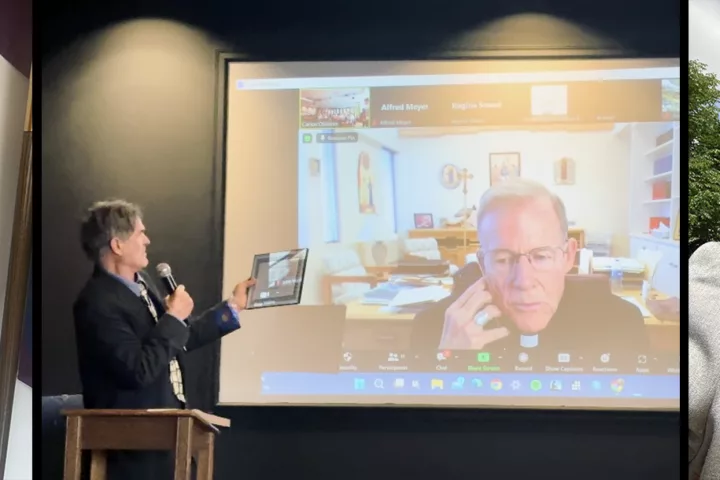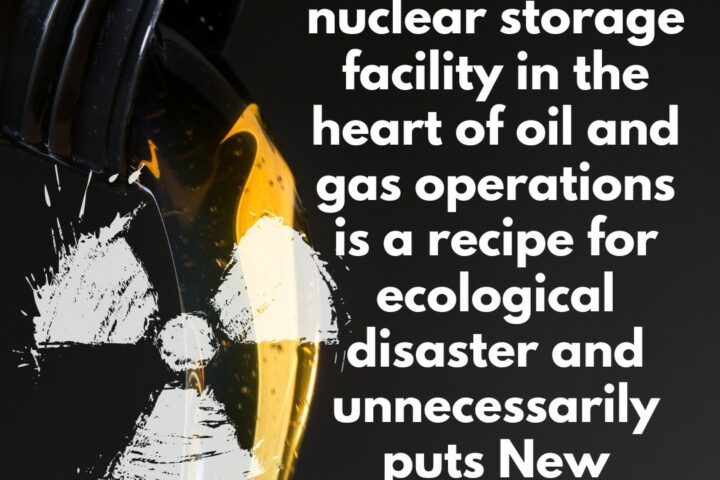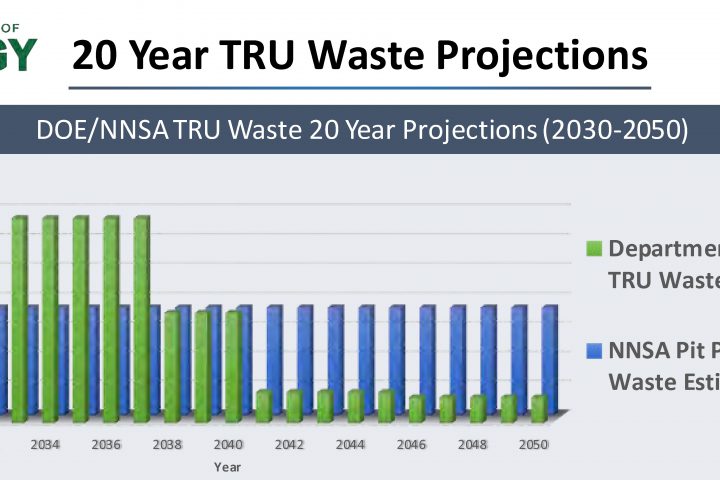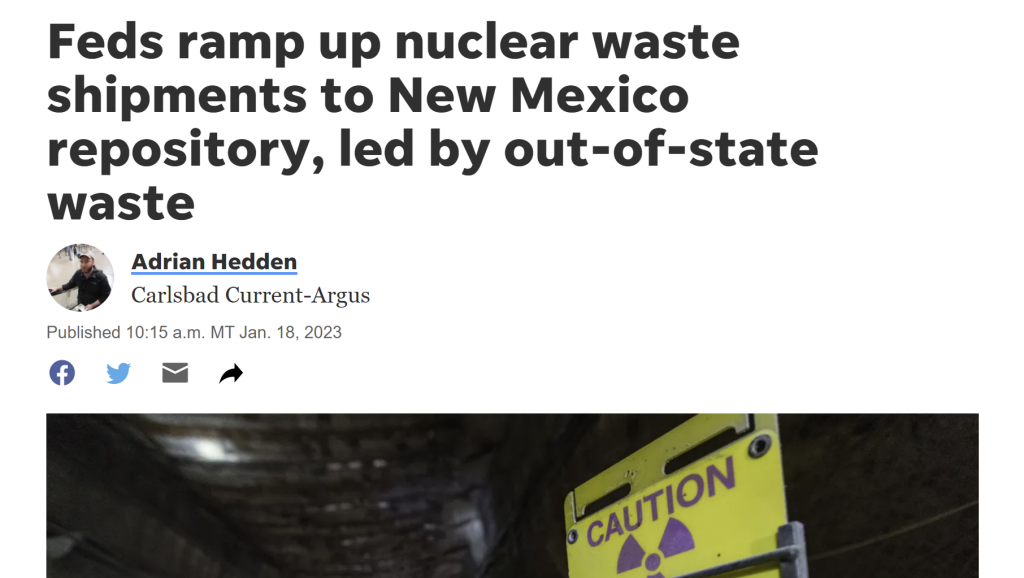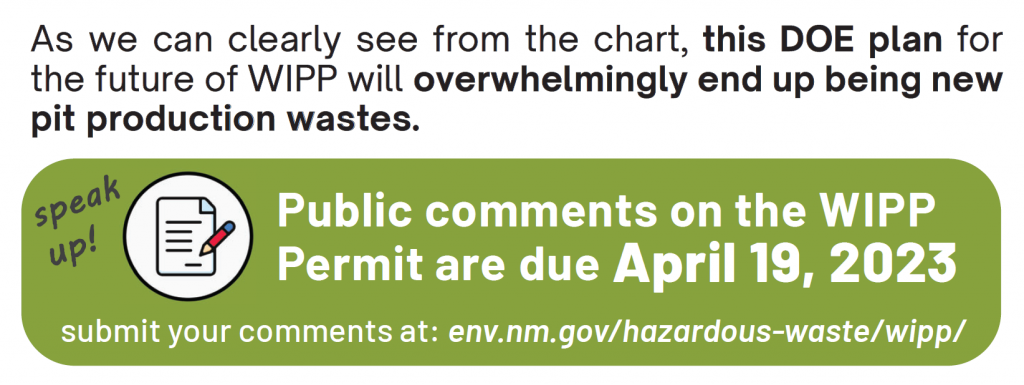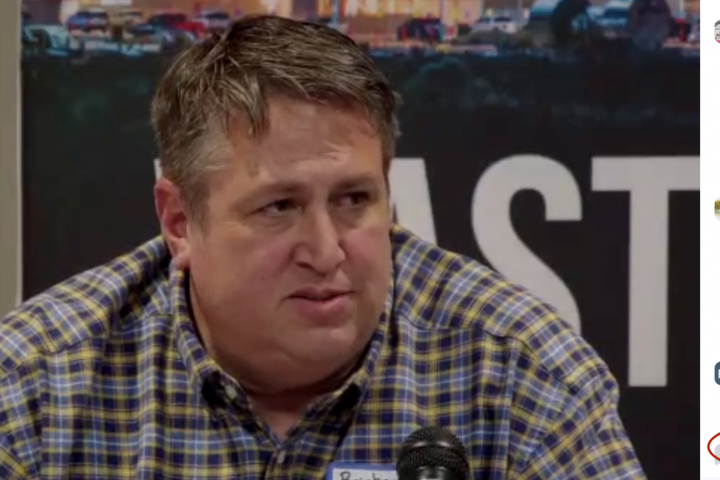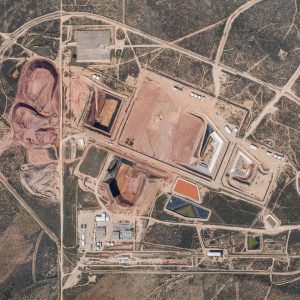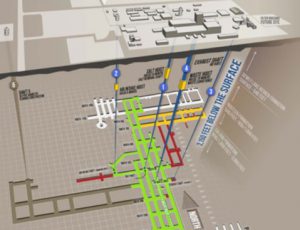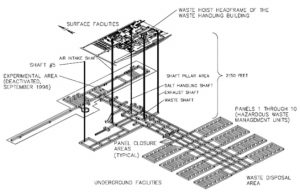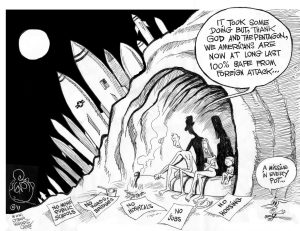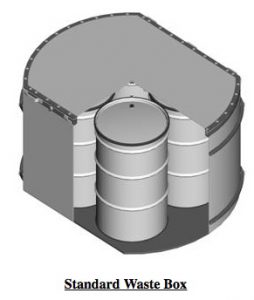On December 17, 2017, the Department of Energy (DOE) awarded a separate $1.4 billion contract for cleanup at the Los Alamos National Laboratory (LANL) to Newport News Nuclear BWXT-Los Alamos, LLC (also known as “N3B”).[1] This award followed a DOE decision to pull cleanup from LANL’s prime contractor, Los Alamos National Security, LLC (LANS), after it sent an improperly prepared radioactive waste drum that ruptured underground at the Waste Isolation Pilot Plant (WIPP). That incident contaminated 21 workers and closed WIPP for nearly three years, costing taxpayers at least $1.5 billion to reopen.
Tetra Tech Inc is a major subcontractor for N3B in the LANL cleanup contract. Tetra Tech is part of Tech2 Solutions, and will be responsible for the groundwater and storm water programs at LANL that are of intense interest to the New Mexico Environment Department and citizen environmentalists.[2] To date, these programs have been supported by several New Mexico small businesses that will be displaced by Tetra Tech.
Serious allegations of fraud by Tetra Tech were raised long before the LANL cleanup contract was awarded. The US Navy found that the company had committed wide spread radiological data falsification, doctored records and supporting documentation, and covered-up fraud at the Hunters Point Naval Shipyard cleanup project in San Francisco, CA. See media links and excerpts below.
The award of the LANL cleanup contract that includes Tetra Tech raises serious questions about the DOE’s contract evaluation and award process, and the Department’s due diligence in reviewing the performance histories of companies bidding for DOE work. To put this in broad perspective, the DOE’s nuclear weapons and cleanup programs have the singular distinction of being on the congressional Government Accountability Office’s High Risk List for fraud, waste and abuse since 1990.
Potential groundwater contamination is of intense interest to New Mexicans. As late as 1996 the Los Alamos Lab was officially declaring that groundwater contamination was impossible because the overlying volcanic tuff was “impermeable.” LANL even went so far as to request a waiver from NMED to not have to monitor groundwater contamination at all (which fortunately NMED denied). What the Lab, which advertises its “scientific excellence,” omitted to say is that the Parajito Plateau’s geology is highly complex and deeply fractured, providing ready pathways for contaminants to reach groundwater. Indeed, in just the last few months Nuclear Watch forced LANL to admit that its chromium hexavalent-6 groundwater contamination plume is much bigger than previously thought.[3]
Scott Kovac, Nuclear Watch Research Director, commented, “It took years for the DOE Environmental Management Office in Los Alamos to put a cleanup contract in place. We are seriously disappointed that there are major problems before the contract even starts. This situation shines a light on the cozy DOE contractor system, where every cleanup site has different combinations of the same contractors. Call it different trees, but the same old monkeys, where the real priority is to profit off of taxpayers dollars before a shovel turns over any waste.”
Jay Coghlan, Nuclear Watch Director, added, “The entire LANL cleanup program needs to be rethought.” In September 2016 DOE released a 2016 Lifecycle Cost Estimate Summary[4] of proposed future cleanup at LANL. At the beginning of that document the Department declared, “An estimated 5,000 cubic meters of legacy waste remains, of which approximately 2,400 cm [cubic meters] is retrievably stored below ground”, which was widely reported in New Mexican media. From there DOE estimated that it will cost $2.9 to $3.8 billion to complete so-called cleanup around 2040, which is woefully low.
However, the DOE report was far from honest. It intentionally omitted any mention of approximately 150,000 cubic meters of poorly characterized radioactive and toxic wastes just at Area G (LANL’s largest waste dump) alone, an amount of wastes 30 times larger than DOE admits in the 2016 Lifecycle Cost Estimate.
In reality, DOE and LANL plan to not clean up Area G, instead installing an “engineered cover” and leaving the wastes permanently buried. This will create a permanent nuclear waste dump above the regional groundwater aquifer, three miles uphill from the Rio Grande. Radioactive and toxic wastes are buried directly in the ground without liners, and migration of plutonium has been detected 200 feet below Area G’s surface.[5]
“In sum,” Coghlan concluded, “DOE should take a cue from the president and tell TetraTech “you’re fired!” Beyond that, after the current governor gets out of the way, the New Mexico Environment Department should completely reevaluate cleanup at LANL and force the Lab to genuinely clean up, which it is failing to do now.”
# # #
Media excerpts (copying URLs into browser is recommended):
June 29, 2017, well before the LANL cleanup contract was awarded- https://www.sfgate.com/bayarea/article/Ex-SF-Navy-shipyard-workers-allege-fraud-in-11257774.php
Ex-SF Navy shipyard workers allege fraud in radiation cleanup By J.K. Dineen Published 9:06 pm, Thursday, June 29, 2017 “The cleanup of radioactive contamination at the Hunters Point Shipyard was marred by widespread fraud, faked soil samples, and a high-pressure culture where speed was valued over accuracy and safety, according to four former site workers…” “Questions over the accuracy of the soil tests emerged in October 2012, when the Navy discovered that some results were inconsistent with results from previous samples collected in the same areas.” “In a statement, Tetra Tech spokesman Charlie MacPherson said the company “emphatically denies the allegations made by individuals at today’s news conference that Tetra Tech engaged in a cover-up of fraud on the Hunters Point Naval Shipyard.”
Jan 31, 2018: https://sf.curbed.com/2018/1/31/16956458/hunters-point-toxic-cleanup-navy-responds-san-francisco
Navy: Do-over of $250 million cleanup at Hunters Point necessary Unknown delay for city’s biggest redevelopment project By Chris Roberts@cbloggy “…According to a review of Tetra Tech’s data, triggered by allegations of fraud first made in 2011 and 2012, as much as half of Tetra tech’s work contains problems. That’s enough for the Navy to lose trust in all of the company’s data, Derek Robinson, the Navy’s coordinator for cleanup at the shipyard, said in an interview on Tuesday. “We’ve lost confidence” in Tetra Tech’s work, said Robinson. “All areas” at the shipyard where Tetra Tech did work will be re-tested, beginning as early as this summer… Problems with Tetra Tech’s data first surfaced in 2011 and 2012, when contractors and workers at the shipyard stepped forward with allegations of fraud…”
Jan 26, 2018 https://sf.curbed.com/2018/1/26/16916742/hunters-point-shipyard-toxic-cleanup Almost half of toxic cleanup at Hunters Point Shipyard is questionable or faked, according to initial review City’s goals for housing, affordable housing in doubt after fraud at city’s biggest redevelopment project “much worse” than thought By Chris Roberts@cbloggy,
[1] See https://energy.gov/em/articles/doe-awards-new-los-alamos-legacy-cleanup-contract
[2] See http://tech2.solutions/projects/lanl/
[3] The dangers of chromium-hexavalent 6 were made famous in the film Erin Brocovitch.
[4] The Department of Energy’s 2016 Lifecycle Cost Estimate Summary for LANL cleanup is available at https://nukewatch.org/importantdocs/resources/LBC-Summary-Aug-2016.pdf
[5] Documentation of the plutonium detection 200 feet below the surface of Area G is at https://nukewatch.org/importantdocs/resources/AGCME Plate_B-3_radionuclides_subsurface.pdf

